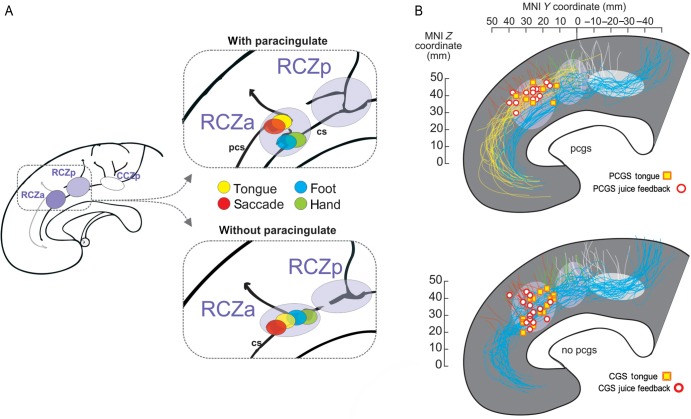Figure 2.
Human cingulate motor areas, feedback activity, and sulcal morphology. (A) Schematic illustration of the 3 human cingulate motor areas (RCZa, RCZp, and CCZ) as described by Amiez and Petrides (2014). Colored disks represent the average location of activation peaks in response to simple voluntary movements for hemispheres with (top) and without (bottom) a paracingulate sulcus. cs: cingulate sulcus, pcs: paracingulate sulcus. (B) Overlap of tongue movement-related activation peaks (individual peak locations are represented by squares) and peaks for feedback-related activation (circles) during exploration for hemispheres with and without a paracingulate sulcus. Each individual sulcus path has been retraced, and all paracingulate (blue) and cingulate (yellow) sulci, as well as vertical branches (red, green, and white), have been overlapped for the populations of subjects. Data taken from Amiez et al. (2013) and Amiez and Petrides (2014). Note, the activation data come from 2 separate experiments. The approximate location of RCZa, RCZp, and CCZ is indicated by ellipses (rostrocaudal extent estimated from Amiez and Petrides 2014).

